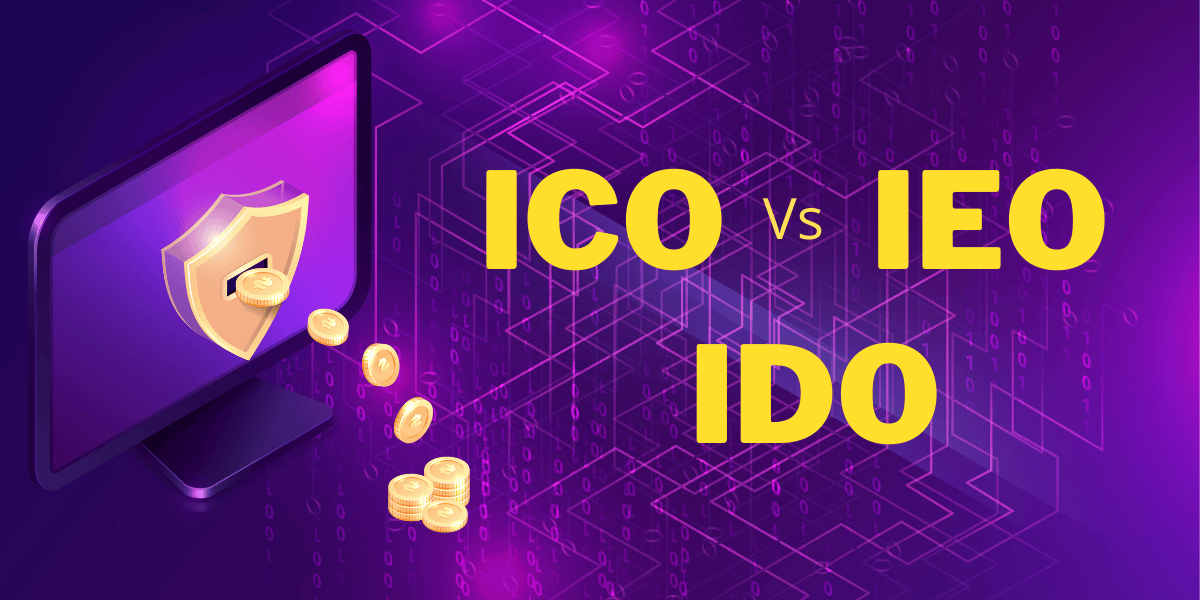
Initial Coin Offering (ICO)
ICO stands for “initial coin offering“. The name suggests that any project or idea that needs fundraising can offer ICO. It can be any service, product, creation of new coin, launch exchange or anything related to cryptocurrency. The company creates cryptocurrency tokens and releases it on the ICO website for investors to buy. The token offers special benefits to the holders in the form of availing its services or represents some stake in the project. The roadmap of ICO involves several stages like white paper creation, token creation, pre-ICO marketing, and post ICO marketing that you can find in ICO development.
How does ICO Work?
When a cryptocurrency startup seeks to acquire funds through an initial coin offering (ICO), the first step is to figure out how the offering will be structured. ICOs can be set up in a variety of methods, including:
- Static ICO - A firm can specify a specified financial goal or limit, which implies that each token sold in the ICO has a defined price and the overall token supply is fixed.
- Partial Static ICO: An ICO can have a fixed supply of tokens and a dynamic fundraising goal, which implies that the overall price per token is determined by the amount of money raised in the ICO. Also this happens vice-versa. The ICO can have unlimited supply of tokens with stable price fixed.
What is IEO?
Initial exchange offering(IEO) comes as the alternative to ICO when the crypto community experiences a major fallback in ICO scam. The IEO rises as transparency and trust becomes the first priority for investors and IEO lets the process go easy. IEO is the fundraising model that allows the token issuers to list their tokens in the centralized exchanges.
How does the IEO work?
Step 1 - The IEO project is pitched on the centralized exchange for listing.
Step 2 - The centralized exchanges will approve the IEO based on the project scope, and charge the token issuers a certain money to fundraise on the exchange. This gives startups an additional cost to kickstart their offerings. On the other hand, it gives investors a strong signal of trust and IEO can be found in the eyes of exchange users massively.
Step 3 - The IEO sale is live to the public via marketing channels that the centralized exchange owns.
IDO
IDO stands for “initial dex offering”. This is the most loved fundraising model preferred by entrepreneurs nowadays worldwide. IDO shares the similar concept of IEO and differs in the way of listing mechanism. IDO’s happen in the decentralized exchange(DEX) whereas IEO happens in the Centralized exchange.
IDO eliminates the scam and fraud activities that happened in the early days of ICO. IDO raises capital for the project like a traditional IPO, but it doesn’t give equity to the stakeholders. Instead, it offers company and token holders the freedom to use their tokens in a smart way.
What is an IDO launch pad? How does it work?
The platform where Initial DEX offering takes place is called IDO launchpad. IDO launch pads act the same way as the crowdfunding platforms but it uses the decentralized format by making use of smart contract protocols. When the IDO project hits, the value of the tokens increases contributing a good profit for early stage investors. That's why IDO is so popular among both investors and entrepreneurs offering reliable benefits in the long run. Whereas, IDO launchpad owners make the transaction commission in small amounts for the tokens sale. Additionally there are more defi business models out there.
If you need a visual explanation on how these ICO, IEO, IDO models work? Get in touch with our experts for one to one discussion for free.












![Thumbnail [100%x225]](https://hivelance-blogs.ap-south-1.linodeobjects.com/how-to-setup-cryptocurrency-exchange.webp)
![Thumbnail [100%x225]](https://hivelance-blogs.ap-south-1.linodeobjects.com/open-source-crypto-exchange-viable.webp)




